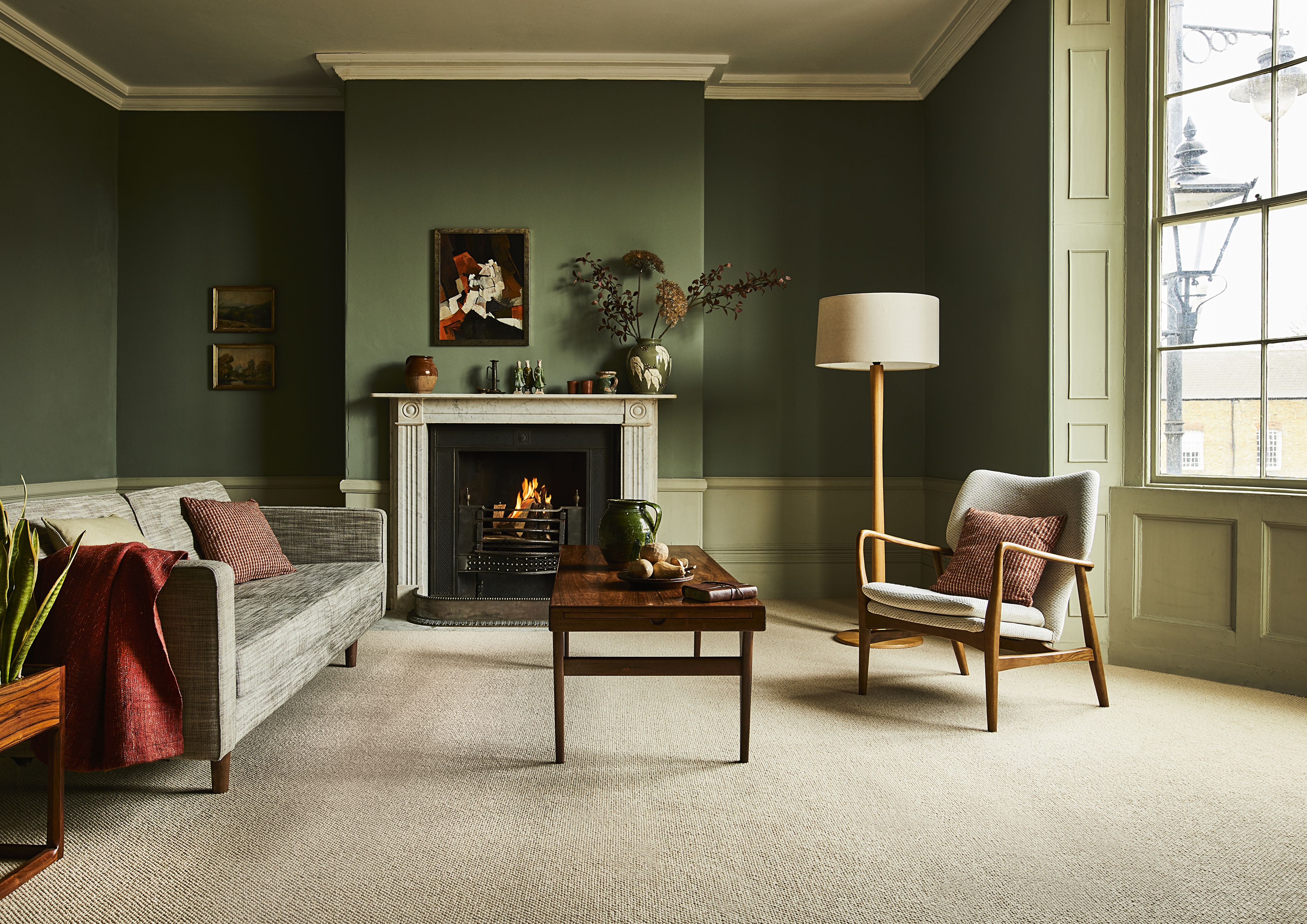

You’re likely to have plenty of requirements in mind when you’re looking for living room flooring ideas. It needs to stand up to the daily use of the whole family, including, in many homes, kids and pets, so it’s vital it’s durable. It also has to be easy to clean and maintain as the room is going to see a lot of footsteps as well as possible spills. And, of course, you need to love the look of your floor, too.
The best living room ideas are always complete with stunning flooring designs that deliver when it comes to appearance and practicality too. And with so many different types of living room flooring to pick from – carpet, wood, laminate, vinyl and tile are all among the top options – you're sure to find the style and material that will meet all your needs.
Living room flooring ideas
There are a whole host of types of flooring you could use in your living room and the breadth of the options could feel exciting – or overwhelming. Either way, it's simply a case of weighing up the pros and cons for each in terms of looks, durability, how easy they are to maintain and so on.
1. Opt for carpet
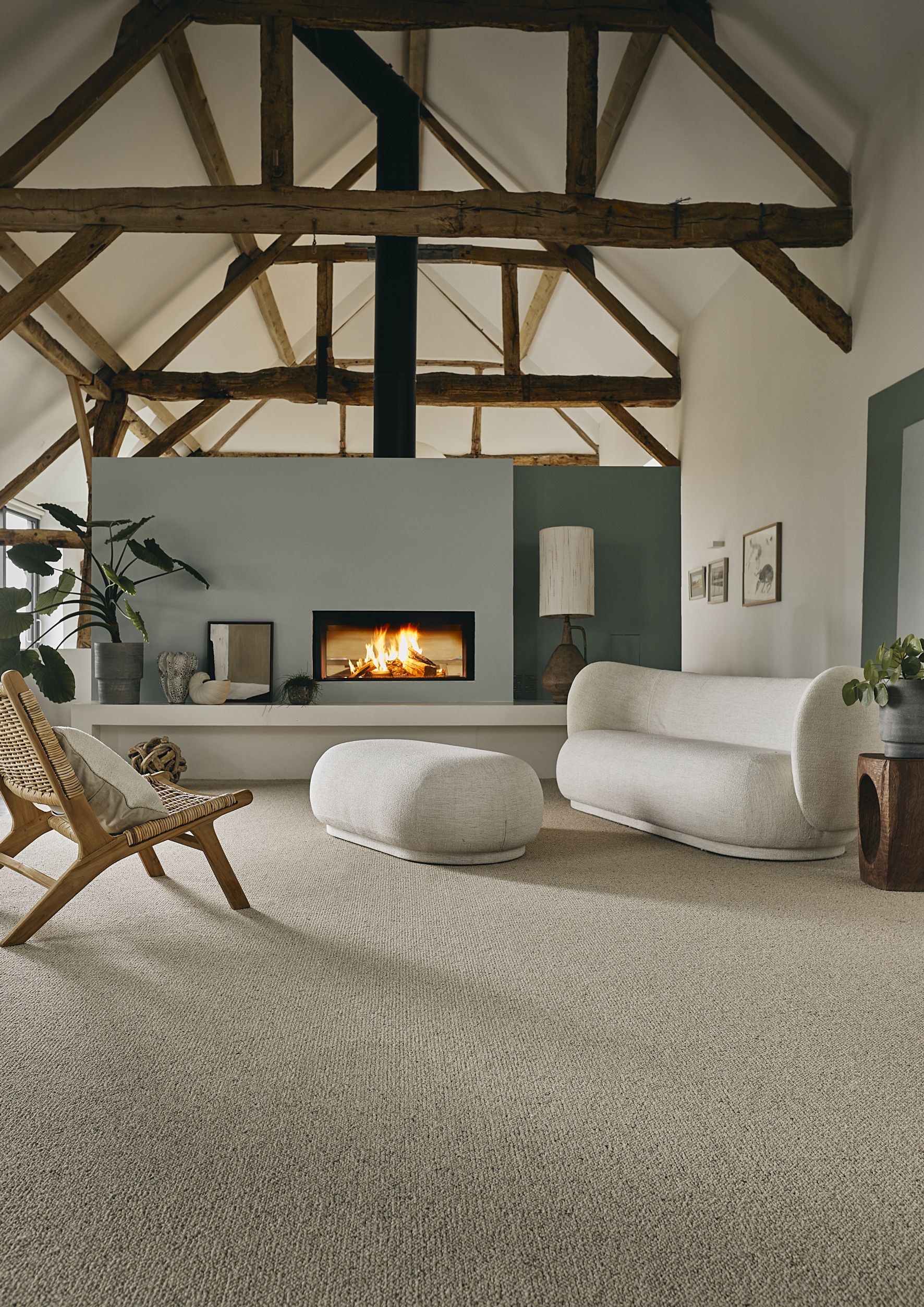
If a surface that’s warm and soft underfoot is number one on your list of criteria, you may well think carpet is the best living room flooring for your home.
Carpet for a living room should be hard wearing. An 80 per cent wool, 20 per cent manmade fibre version will stand up to the everyday foot traffic and stay looking good. Household includes small children? You could go for polypropylene to maximize stain resistance.
Plain carpet comes in a huge range of colors, but consider also a patterned version, which can add glamor: small versions look more traditional while large-scale motifs have a contemporary aesthetic. Think stripes, geometrics and even florals – now available with 21st century style.
2. Choose natural flooring
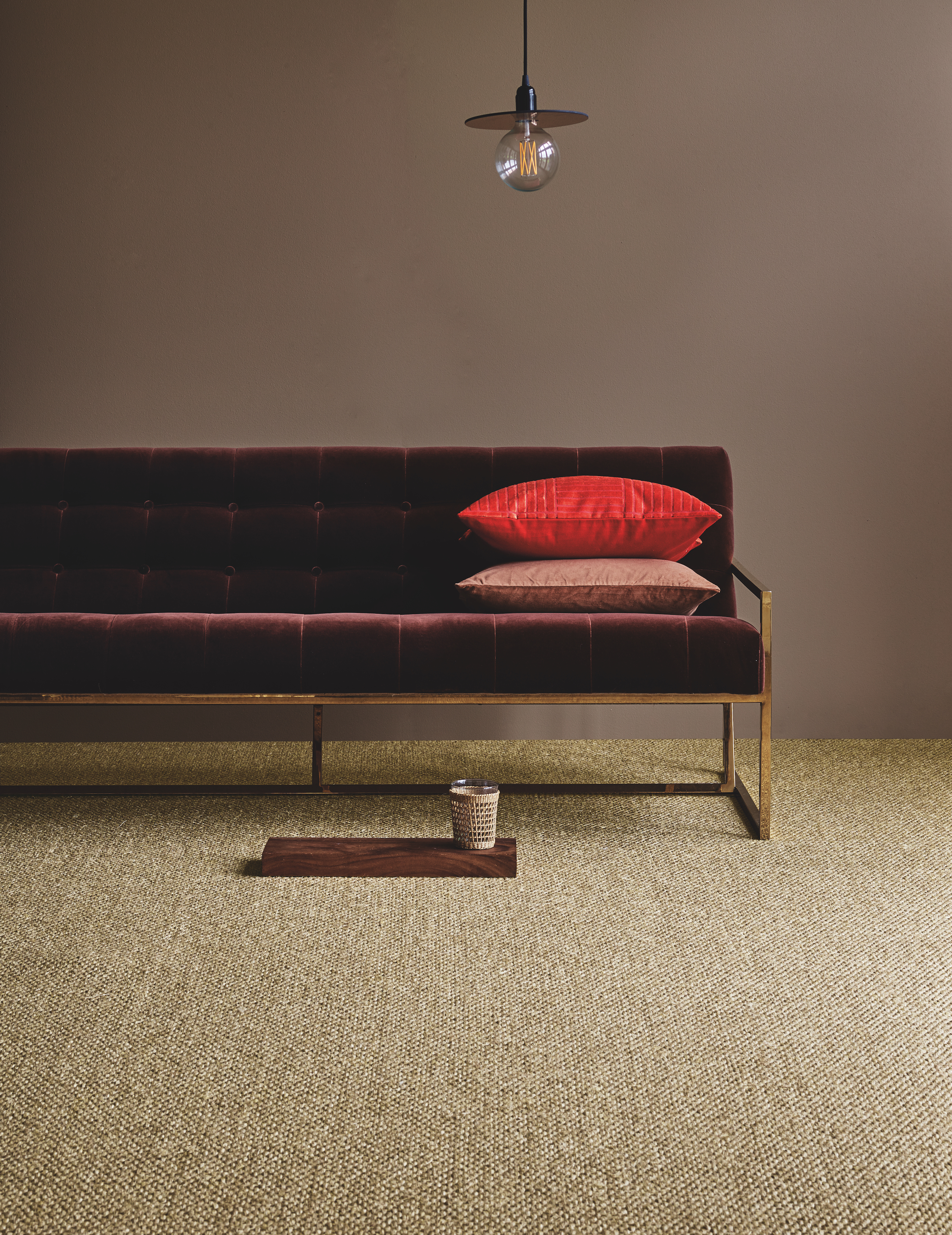
Another of the living room flooring ideas we’re huge fans of is using natural flooring. It may not be one of the types of living room flooring you’ve considered before, but there are many sorts of natural flooring suitable for a living room.
Consider hard-wearing sisal, which can add subtle detail through interesting weaves such as bouclé and herringbone. Or try rustic seagrass (which may need protection for a heavy traffic area: check with your supplier). There’s also robust coir, but it isn’t kind on bare feet, so won’t suit all households.
3. Go for enduringly stylish wood living room flooring
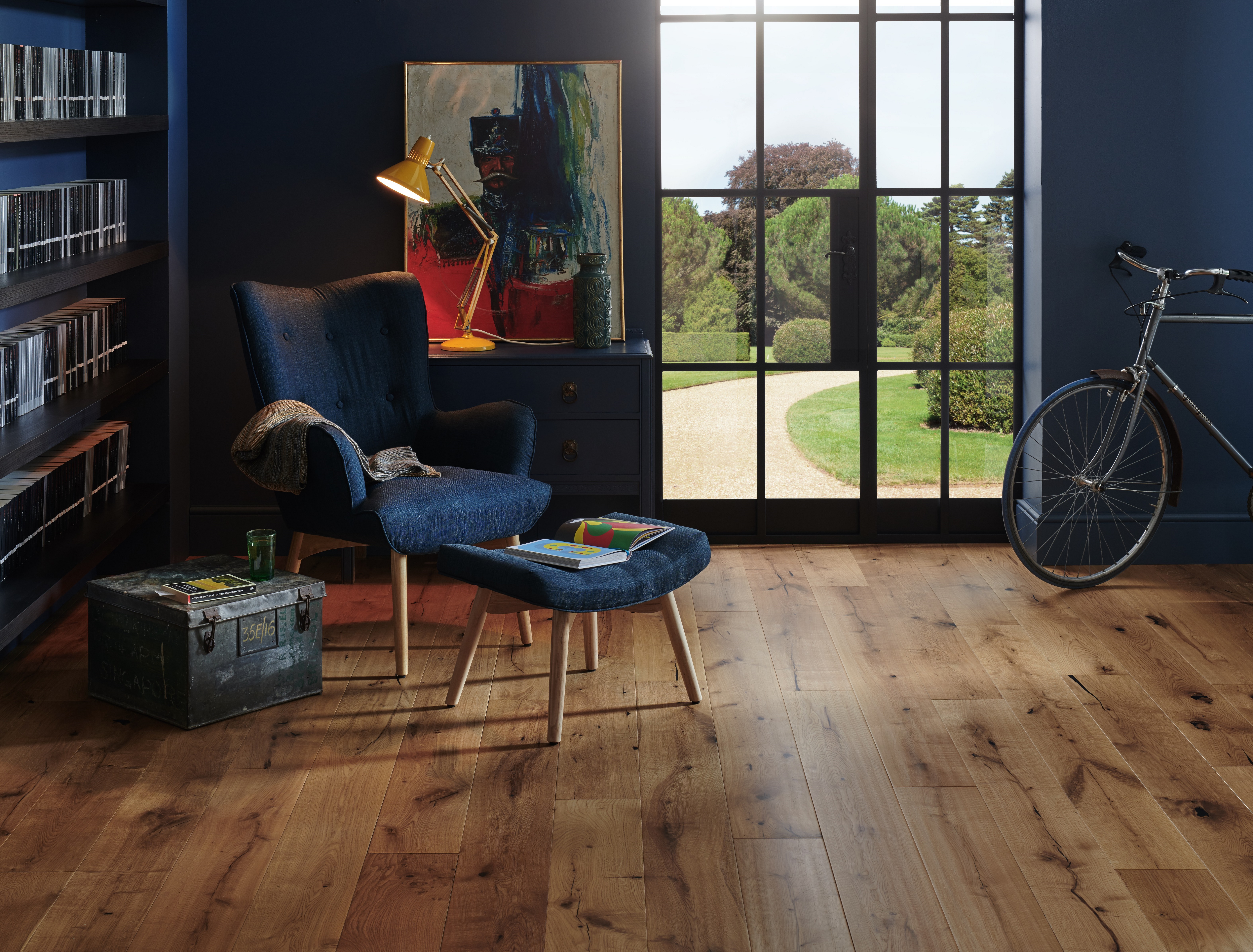
Wood flooring is a beautiful choice for a living room and will never go out of style. Both solid wood and engineered wood are options.
Solid types of wood flooring will introduce an organic element to a living room scheme, and the variety of species, tones, and board lengths and widths, plus the option of geometric parquet patterns mean it can be as subtle or statement as you like. Wood flooring can last for many, many years and, if it is damaged, can be sanded and refinished.
It’s the favorite of Rick Abbiati, owner of Colony Property Investments. ‘The best flooring for your home is hardwood,’ he says. ‘Hardwood floors provide a feeling of warmth and coziness. In addition, if you have a darker color hardwood, you can easily conceal scratches and dings. Simply use one of the many hardwood markers to cover those up.’
You might also take a look at engineered wood, which has equal natural beauty and the benefit of a structure that makes it resistant to changes in humidity. Look for engineered wood with a top layer that allows it to be refinished should dents occur – lower quality versions won’t offer this. As with solid wood, there are plenty of options when it comes to tone and look.
4. Get a wood look with laminate
If wood is your favorite of all living room flooring ideas, but your budget won’t stretch to it, a good type of laminate is a great alternative to solid or engineered wood.
It’s worth going for the best quality laminate so it’ll last. Make sure, too, that the version you opt for is suitable for a heavy traffic area.
‘Laminate flooring has come a long way in recent years in terms of quality and how closely it resembles real hardwood,’ says Julie Aragon of the Julie Aragon Lending Team, who’s a property investor in Los Angeles and has worked in real estate and mortgage for 19 years.
‘Plus it is simple to install – no hammer, nails, or adhesives needed. The installation is almost like putting together a puzzle on your floor, and people will be convinced you went for real hardwood.’
5. Take a look at vinyl
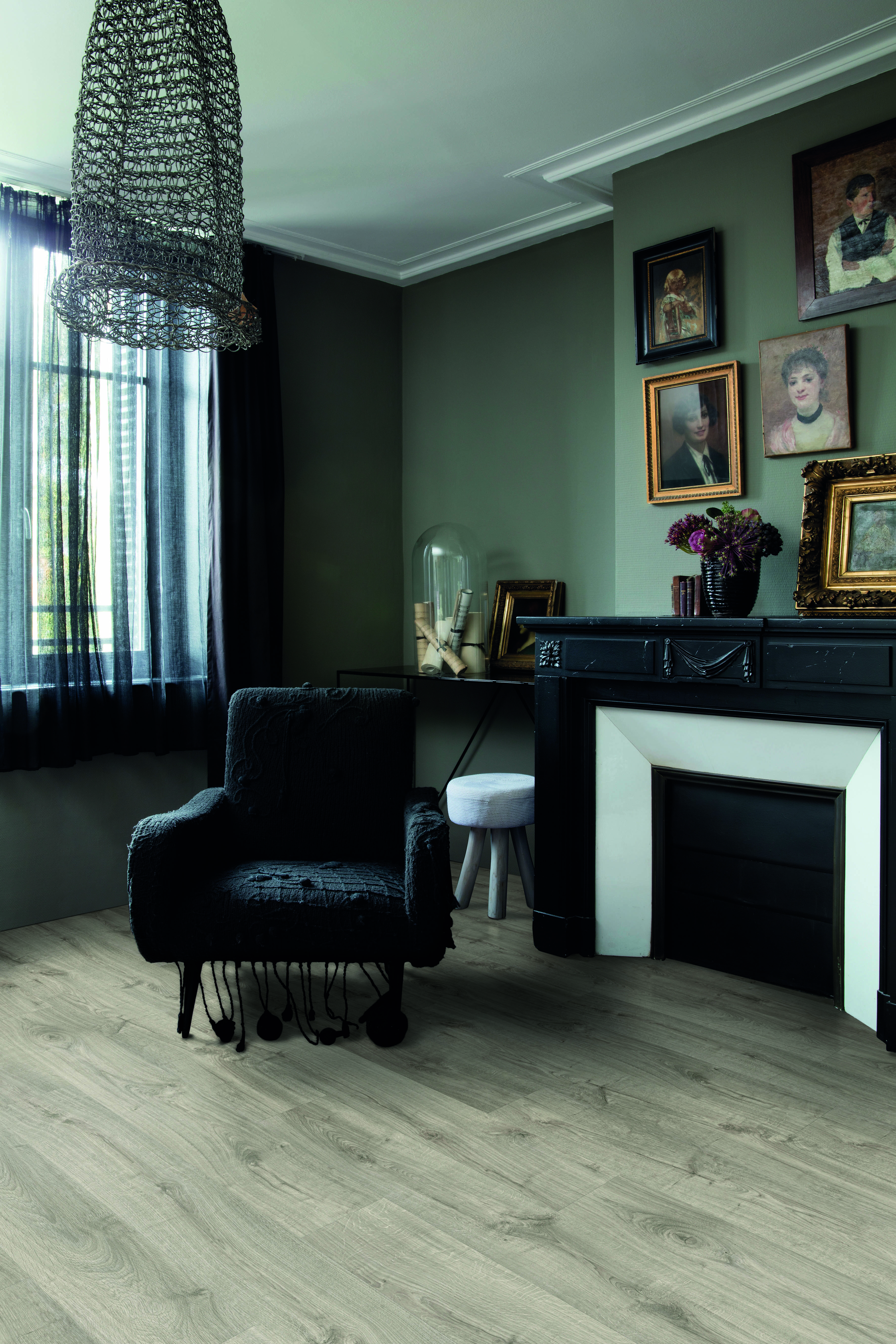
One of the living room flooring ideas you may not have considered to date is using vinyl. But we think you should because it’s a money-saving way to get the look of a more expensive wood, parquet or stone.
Vinyl flooring also has the advantage of being more yielding and warm underfoot than some other materials, so it’s great if you have young kids. Other reasons that might make it the best living room flooring for you? Well, it’s easy to keep clean, saving you time.
‘Luxury vinyl plank flooring is a modern miracle with many options and usually has very affordable installation prices,’ says Andrew Ervin, founder of Maxsin Investment Group. ‘If you are handy, you can do it yourself. The best features about LVP flooring are that it’s water resistant, scratch resistant, and it looks very amazing! Also, it’s virtually zero maintenance, great for pets and children.’
6. Try tile for the living room floor
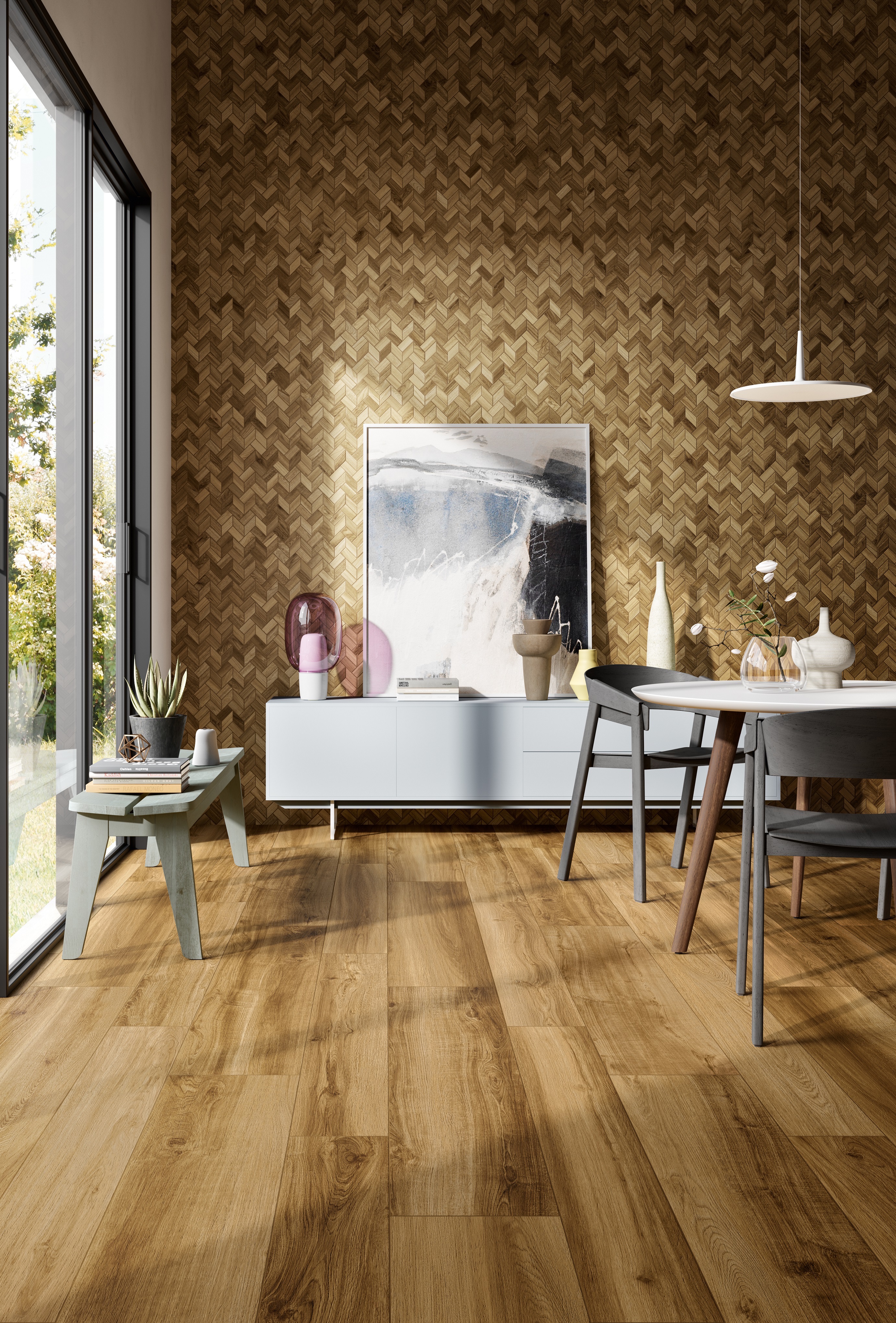
It’s definitely one of the types of living room flooring you should check out, even if you’ve only used it in areas such as the kitchen or bathroom up to now. Yes, we’re talking about the best types of floor tile.
Both porcelain and ceramic can be eminently suitable for this high traffic space, and offer the opportunity to get the look of wood along with the durability of tile. What’s more, tile is so easy to look after.
Want more softness underfoot? You can use area rugs, which can also help zone the space.
7. Go for the luxury of natural stone
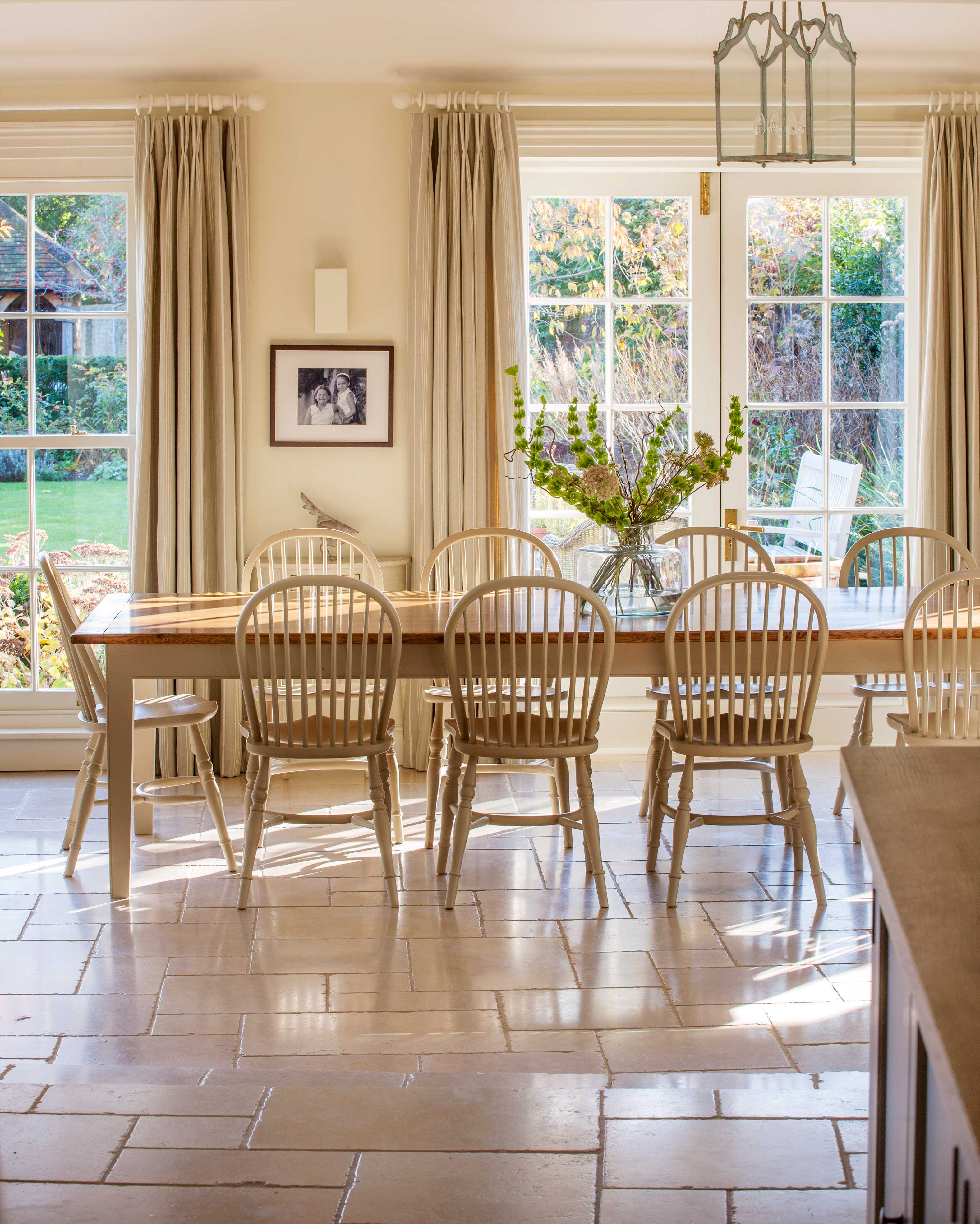
Looking for living room flooring ideas that boost the luxe factor? Like wood, natural stone offers a truly individual floor as each piece is unique.
For living spaces, hard-wearing granite, limestone, filled travertine, slate, or even opulent marble are possibilities.
Always check a particular tile’s suitability for this high traffic area with the supplier, though, and bear in mind that correct sealing is necessary. A word of warning: some stones are more slip resistant than others, so choose with the home’s occupants in mind.
8. Fall for concrete living room flooring
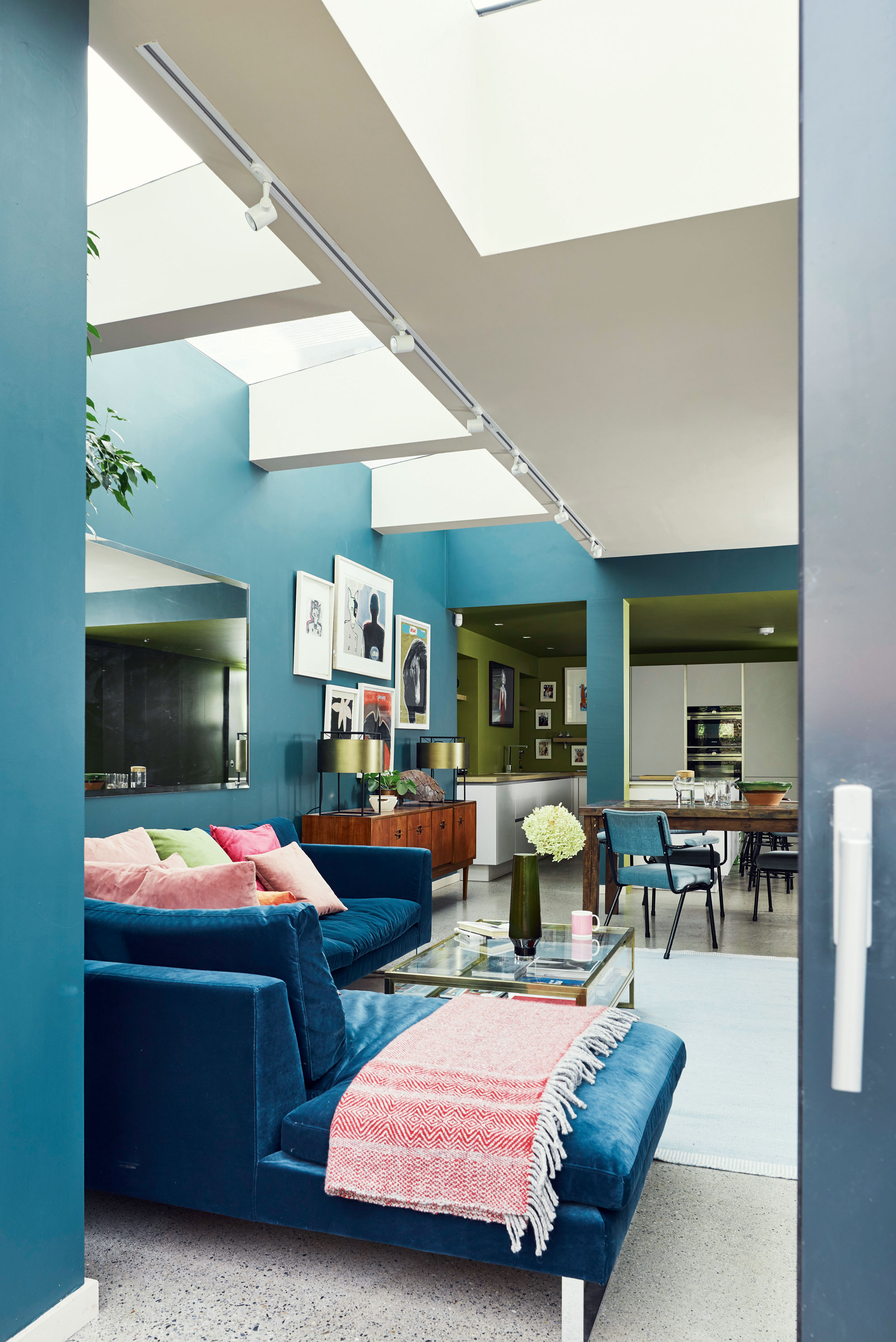
If you love modern style, how about going for a concrete floor for your living room. Along with resin, concrete flooring is increasingly popular for contemporary homes, and ideal for emphasizing the dimensions of an open-plan layout.
Neither are cheap options, although concrete tiles are a budget alternative to a poured concrete floor. Different finishes and colors can be achieved with resin or concrete flooring, and they’re both easy to clean and care for.
If you love the contemporary look, but want something a little softer underfoot, rubber flooring is a more reasonably priced alternative, can be laid as tiles, and is durable, too.
What is the best type of flooring for a living room?
The best type of flooring for a living room will depend on the surface you prefer underfoot, whether you need a low maintenance flooring, and your budget.
If softness and warmth are high on your list of desirable flooring qualities, it has to be carpet or a natural flooring. Want ultimate durability? Pick tile, particularly porcelain, but if your budget stretches, consider natural stone, too.
Wood flooring is a great investment and won’t go out of style. It will also age beautifully. It could get damaged, but in the event, can be refinished. Natural stone is also a luxurious choice but bear in mind that it will likely need maintenance from time to time in the form of resealing.
Volodymyr Barabakh, co-founder and project director of Fortress Home, recommends laminate. ‘Laminate flooring offers the best balance between aesthetics, affordability and durability,’ he explains.
Fan of modern style? Check out contemporary flooring choices like concrete, resin and rubber.
What is the most durable type of flooring for a living room?
If durability is the number one criterion for your living room flooring, porcelain will be at the top of the list along with ceramic. Premium option natural stone is also durable, but check the individual stone’s qualities with your supplier. Wood is also hard wearing and has the advantage that it can be refinished if damaged.
However, all living room flooring should be hard wearing simply because this is a high traffic area of the home so it needs to be able to cope with daily foot traffic and the comings and goings of household members and guests.
Always confirm that your favorite living room flooring option is specified for the room when you’re buying.
Using underfloor heating with living room flooring
If you’re considering underfloor heating for your living room, it’s definitely worth knowing what living room flooring options will work best. Here's what to bear in mind:
- Floor coverings such as stone, porcelain and ceramic tiles work well with underfloor heating.
- Check with your supplier if you want to combine solid wood flooring with underfloor heating.
- Engineered wood should be fine, but do ask the question.
- Good-quality laminates and vinyls can be used with underfloor heating.
- Carpet can be teamed with underfloor heating. Check that the carpet and underlay conform to the maximum TOG (thermal resistance) rating specified by the heating manufacturer, though.
- Contemporary concrete and resin both work with underfloor heating, as can rubber flooring.
Join our newsletter
Get small space home decor ideas, celeb inspiration, DIY tips and more, straight to your inbox!

Sarah is a freelance journalist and editor writing for websites, national newspapers, and magazines. She’s spent most of her journalistic career specialising in homes – long enough to see fridges become smart, decorating fashions embrace both minimalism and maximalism, and interiors that blur the indoor/outdoor link become a must-have. She loves testing the latest home appliances, revealing the trends in furnishings and fittings for every room, and investigating the benefits, costs and practicalities of home improvement. It's no big surprise that she likes to put what she writes about into practice, and is a serial house revamper. For Realhomes.com, Sarah reviews coffee machines and vacuum cleaners, taking them through their paces at home to give us an honest, real life review and comparison of every model.
-
 Lupita Nyong'o's seriously stylish couch inspires a living room reset — nail the look for $4,000 less than the original
Lupita Nyong'o's seriously stylish couch inspires a living room reset — nail the look for $4,000 less than the originalLupita Nyong'o's modern and luxe living room made a few social media cameos, and we couldn't help but swoon over the sofa, a Michel Ducaroy Togo lookalike
By Danielle Valente Published
-
 Anne Hathaway knows exactly how to channel trendy California cool in her rustic home
Anne Hathaway knows exactly how to channel trendy California cool in her rustic homeExperts share how to combine the modern and rustic notes of Anne Hathaway's gorgeous home
By Danielle Valente Published
-
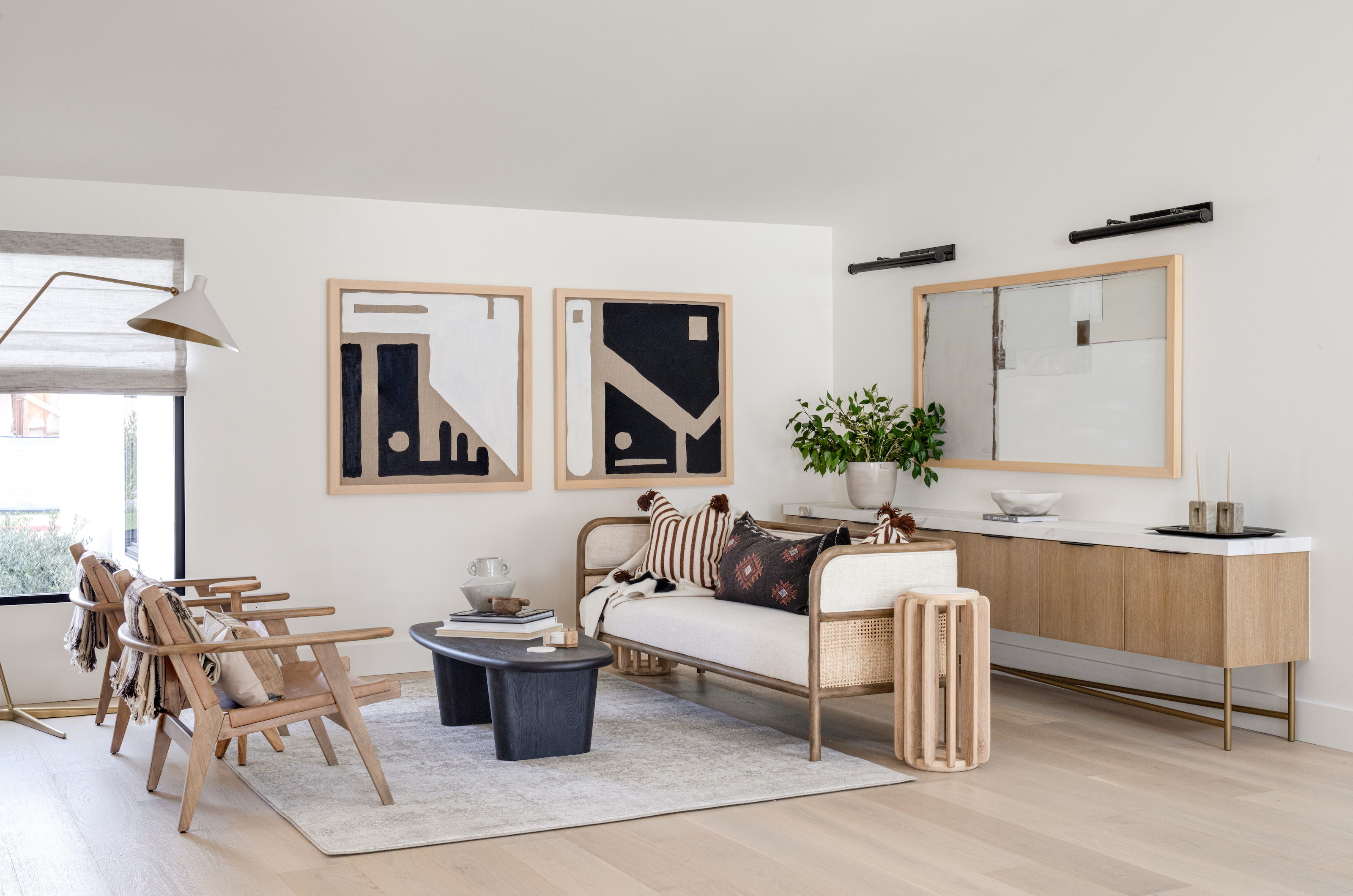 Boho decor ideas: 12 ideas that will inspire you to try this free spirited trend
Boho decor ideas: 12 ideas that will inspire you to try this free spirited trendThis versatile trend is here to stay, so embrace our boho decor ideas in every room of your home
By Sophie Warren-Smith Published
-
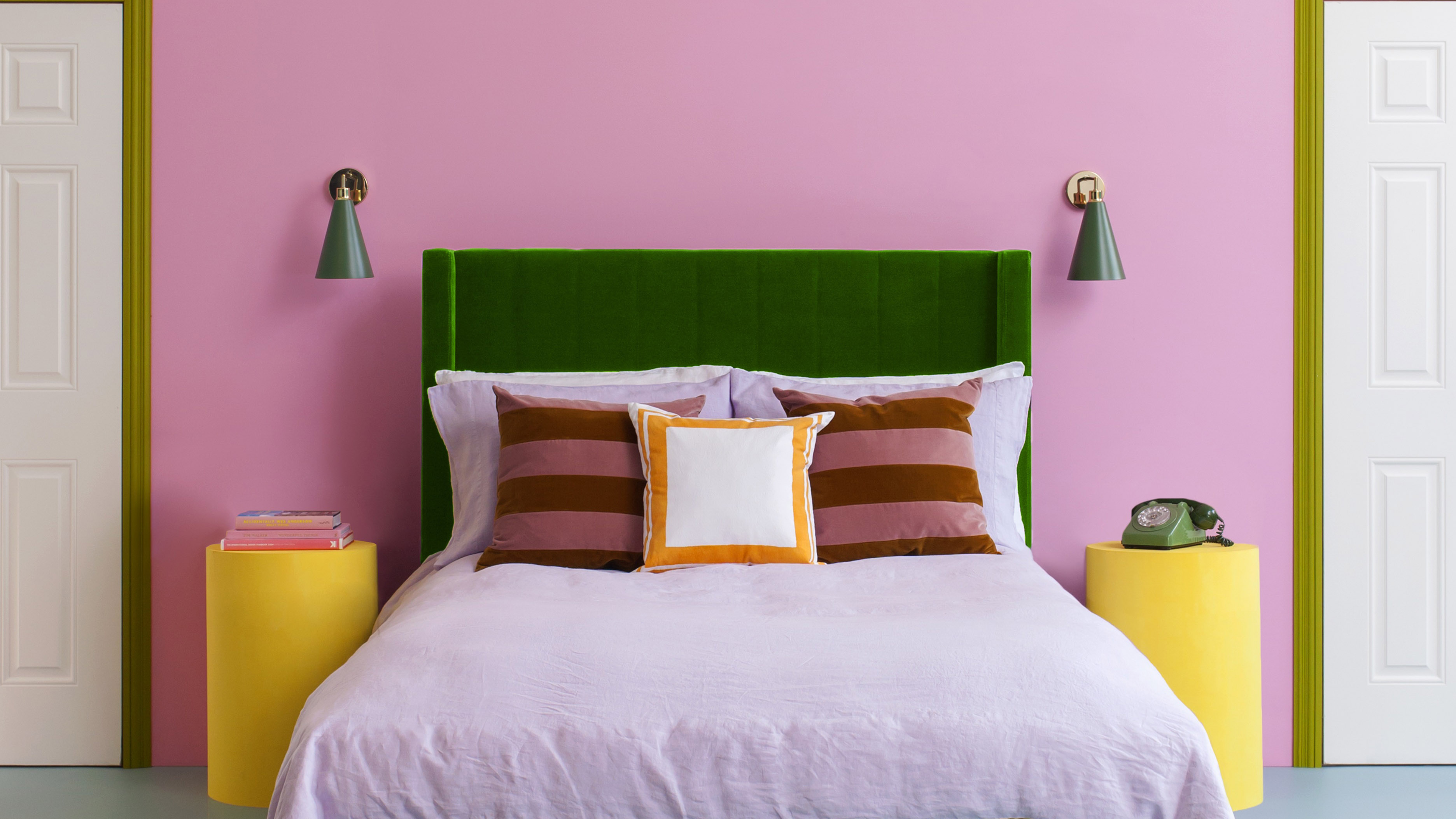 Winning wall color combinations: the fail-safe duos you can rely on
Winning wall color combinations: the fail-safe duos you can rely onThese wall color combinations are a perfect match to amplify one another and create a harmonious space
By Amelia Smith Published
-
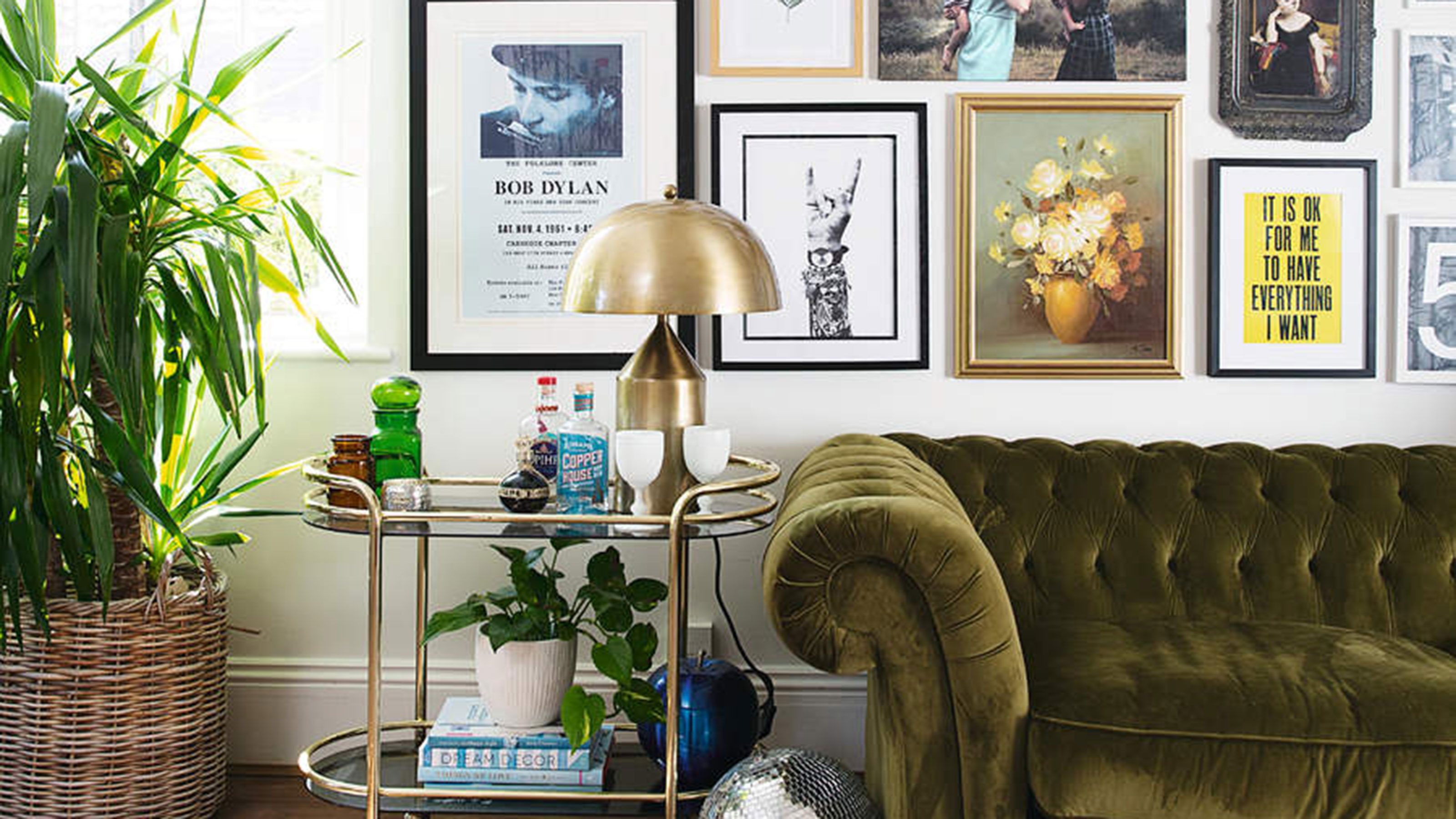 29 gallery wall ideas – ways to beautify your blank spaces and rooms
29 gallery wall ideas – ways to beautify your blank spaces and roomsAdd character to your home with our eye-catching gallery wall ideas – including picture walls and clever nail-free ways to arrange art
By Anna Morley Last updated
-
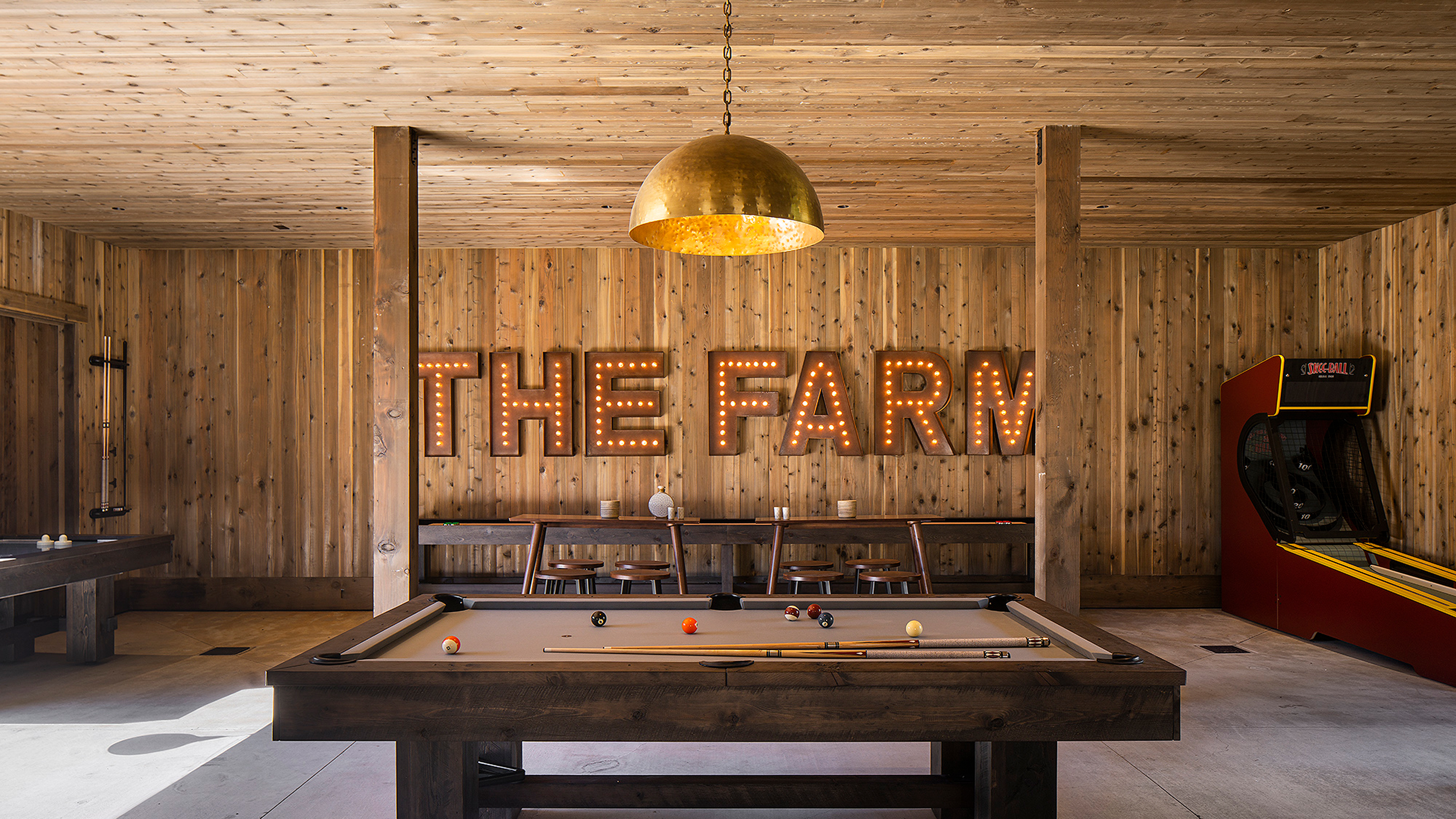 23 farmhouse decor ideas that hug your home in cozy authenticity
23 farmhouse decor ideas that hug your home in cozy authenticityThese farmhouse decor ideas put a spin on homespun and add bucket loads of character, tactility, and cozy vibes to your interior
By Holly Phillips Published
-
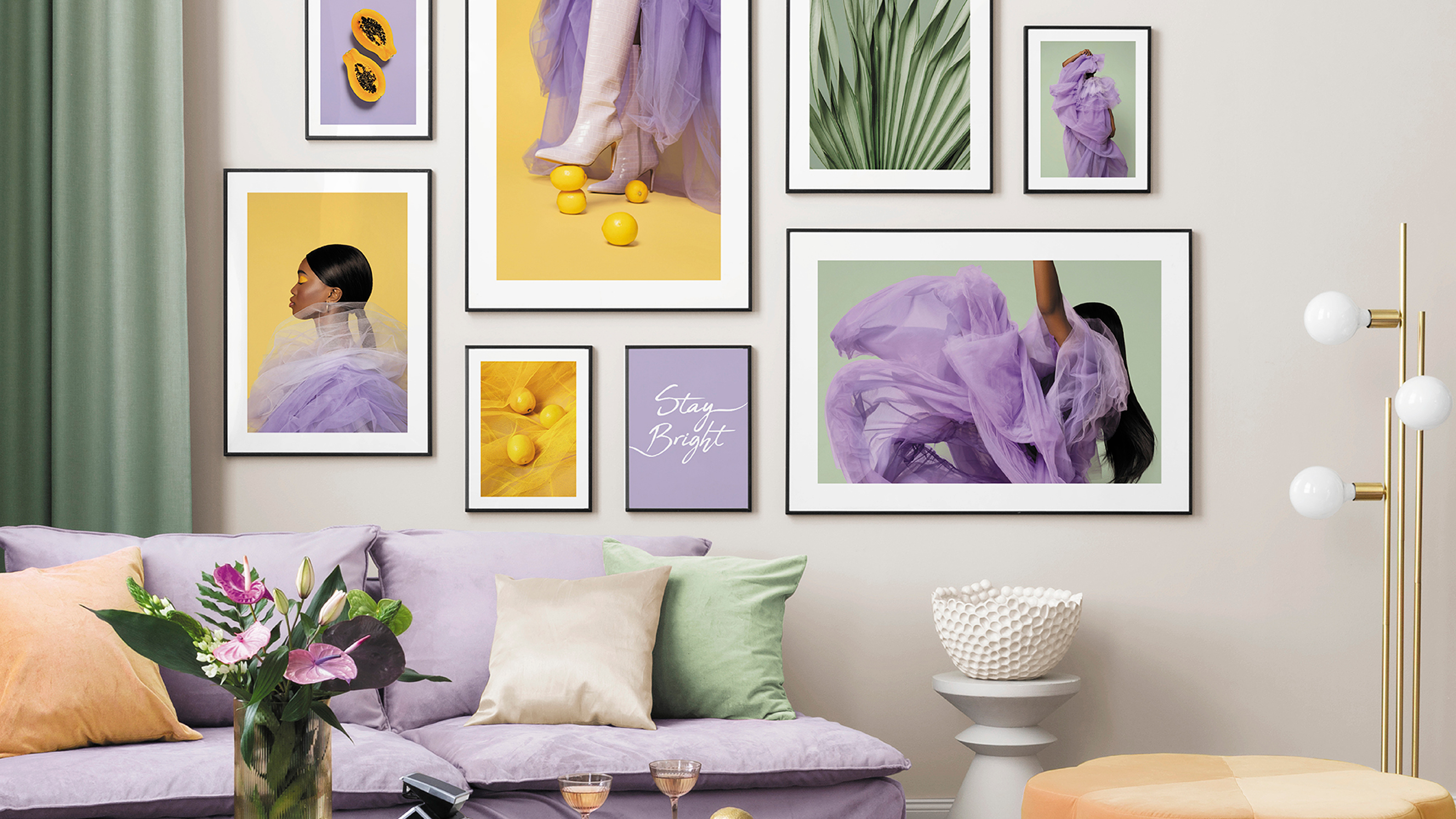 21 living room wall ideas to stylishly decorate a blank space
21 living room wall ideas to stylishly decorate a blank spaceLooking for living room wall ideas to shake things up? From artwork to paneling, there are so many ways to turn a blank wall into something beautiful
By Hebe Hatton Published
-
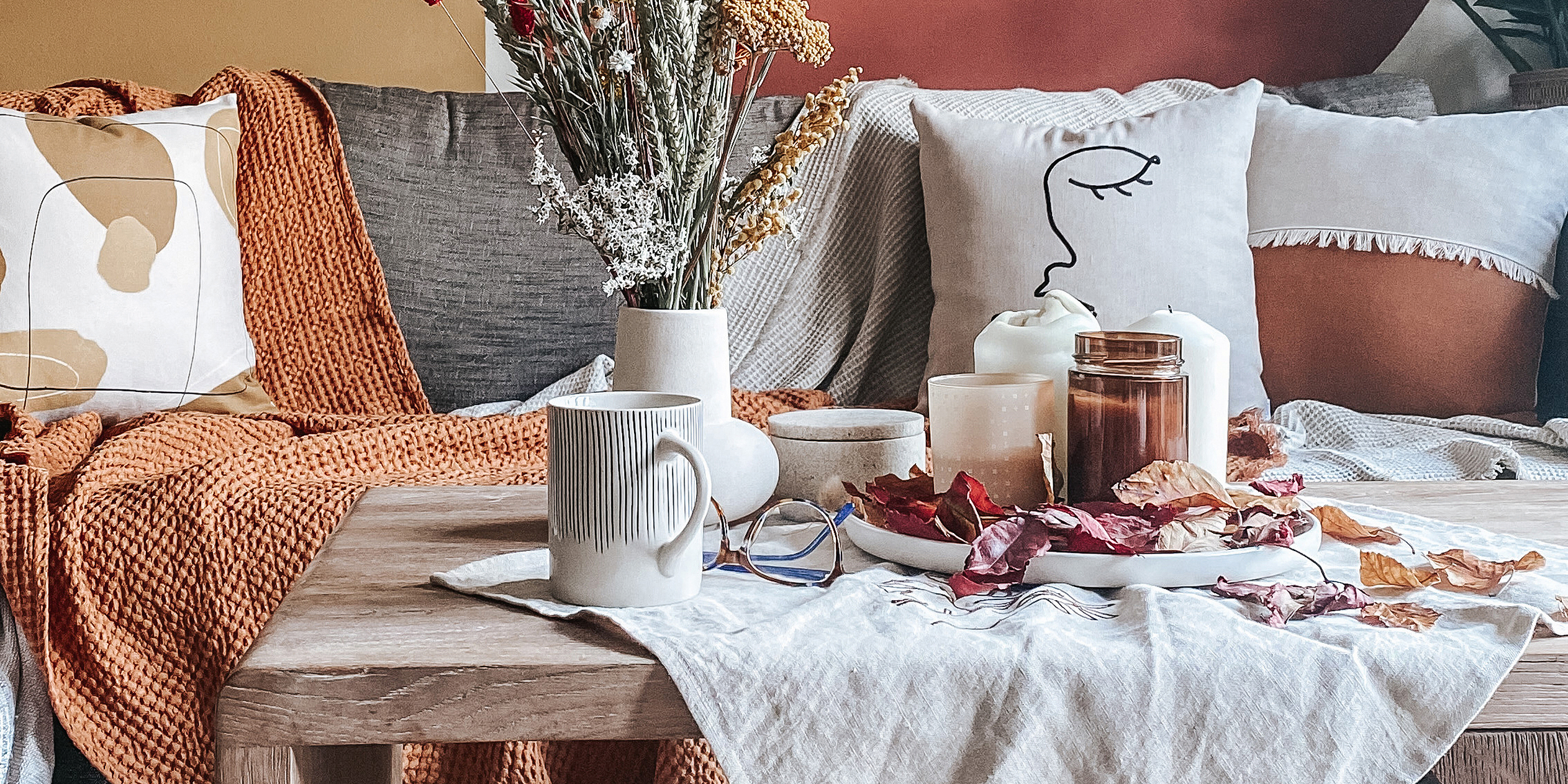 Coffee table decor ideas – 15 creative ways to bring style to your space
Coffee table decor ideas – 15 creative ways to bring style to your spaceCoffee tables are the hub of your living room, so give them the style points they deserve with these simple ideas
By Sophie Warren-Smith Published